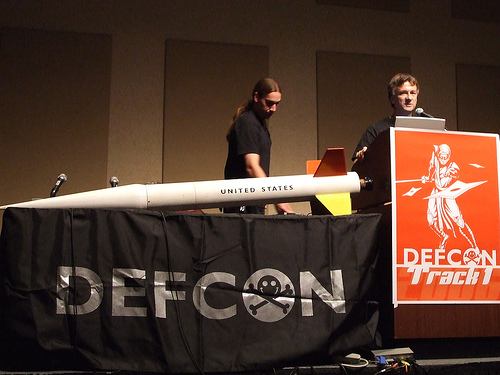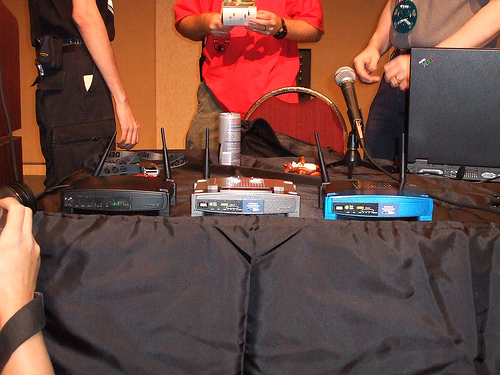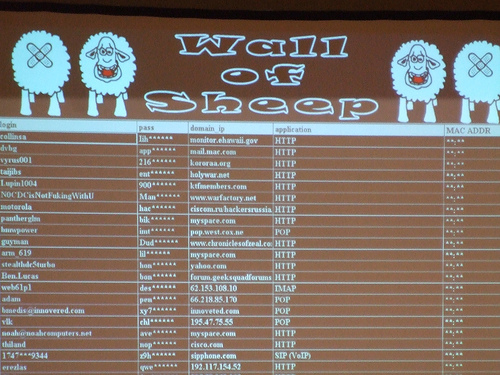On September 14th, FON launched the new version of their online mapping service, after several months of complaints from users that the service wasn’t up to scratch, and announcements stating the development team was working on the problem.
On a first look, the maps look really nice – they use Google Maps, by default in the mixed view, where you see a satellite image and an overlay of roads and placemarks. I will not bore you with the details, as it is better that you check them out yourself and make up your mind.
This post is not intended as a review of the service itself, but rather, a revelation of the real figures behind FON’s network – peeking under the layer of PR and flamboyance. Martin Varsavsky is always boasting about FON being the largest WiFi community of the world – in my view, this is not accurate.
During months, FON has been claiming to be a “movement”, with a marked communist image behind (the marching workers, the spray-painted logos, etc.). This movement was supposed to kill mobile operators, who currently oppress people with their sky-high tariffs. We could go into a long debate just on this topic, but lets move on. During all this time, FON has suffered untold problems with staffing, PR mini-scandals, shipping broken routers or taking weeks and months to even send them out, not replying to repeated requests to support@fon.com, and blatantly ignoring the public forums, where the community behind the movement was expressing its increasing anger and frustration.
The blinding truth – less than 3.700 routers online worldwide
Digging a bit deeper into the workings behind the maps, I have found that there is a method to run a query to retrieve all the hotspots in FON’s database, not just two hundred, or those in a particular region. If you want to see an example, click here. This is a query that will return all hotspots on the planet that have been FONing home during the last hour. It can take a little while to load, so be patient. Until a couple of days ago, results were returned in XML format, which has been dropped in favor of the new plain, comma-delimited format.
I predict that FON will not like the above link, and thus will try to either change the format of the php call, or add artificial records to confuse the application I have written to process the data. First, I wrote a simple application using RealBasic (having been a long-time Visual Basic acolyte, it is a welcome change, allowing me to code under Mac and Windows transparently) – source code here. A screenshot of a full run is shown below.

Just from the details shown after the run, a few enlightening facts surface:
- The highest user ID found is 92.192, but the total amount of processed records is only 55.384. I have to investigate a bit further, but it appears that in some cases, a record is stored twice, once holding the user type (Linus, Alien or Bill), and again holding the router mode (online or unknown). This is the reason why some people see both the orange dot and the green halo on their locations at maps.fon.com, and also the reason why at this time I cannot confirm that the real number of Foneros is 43.896.
- There are only 3.674 routers online on the entire planet. So much for the largest WiFi community in the world. The other 7.814 are registered routers, from which nothing has been heard during the last hour. These figures have been checked a few times during the last few days, and they stay more or less constant.
- Out of the entire user base, only 1.317 have become Bills. So much for milking one’s WiFi.
- The highest router ID found in the results was 19.889, so if we add offline and online routers (best case scenario), then around 8.401 routers have never been registered, representing 42.2% of sold routers. Extrapolating this to the 1 million routers Martin wants to sell would results in a loss of $10.55 million!.
Looking at the per-country statistics (per-city could be made, given some extra time and coding), some curious details also stand out:
- There are two registered routers in Afghanistan – but neither is online. Not surprising, considering the amount of explosives that have been dropped on the place.
- China and Taiwan have 9 routers registered, but none online. Martin was blogging about his expansion into Asia, which looks rather bleak right now. 165 Foneros are registered however.
- Germany and Spain have around the same number of registered routers, although Germany almost doubles Spain in the number of online routers.
- The United States ranks third in number of registered and online routers, however, it holds the highest number of Bills (408). The next is Germany, with 237.
Finally, we can derive a few figures from these numbers. These are highly interpreted, and must be taken as theoretical extremes.
- If FON sold one $3 one-day pass every day of the year on each of the online routers, it would make a gross income of $4 million. This is before tax and the Bill’s share where applicable. You at the back, stop giggling!
- Making a wild assumption that each router’s signal reaches 100 people, FON would only cover 0.11% of Germany’s population of 82 million.
- Boingo gives you access to 45.000 hotspots. FON has about 8% of that figure, and with location quality debatable – it is a fact most FON hotspots will not be optimized for even street-level coverage.
I believe it is time for FON to stop boasting about having the largest WiFi community in the world, and start concentrating on its real problems. And if they still don’t know what these are, they have a nice summary at the online forums. Besides, for spending 500.000 Euros per month, this is a pretty poor show, in my humble opinion.



